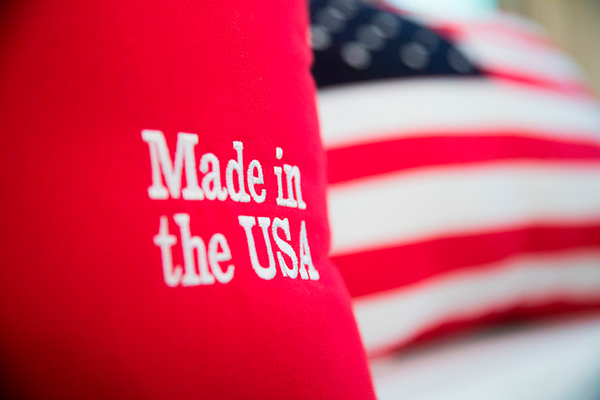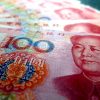If with more delay than expected, the aggressive and protectionist Trump has finally moved into action. The US is unilaterally imposing new tariffs of 10% and 25%, respectively, on imports of aluminium and steel. It is alleging reasons of national security, which the World Trade Organisation (WTO) allows in its Article XXI, but only in exceptional circumstances which, in principle, do not correspond to the current scenario. The announcement was accompanied by an incendiary tweet in which Trump claimed that ‘trade wars are good and easy to win’, flagrantly ignoring both the codes of good diplomacy and the lessons of economic history. With this decision, Trump weakens still further the confidence of his G-7 allies. In addition, the measure will have important consequences for global governance and transatlantic relations. It puts the EU in a very uncomfortable position: Europe could have decided to maintain a low profile and endure some limited economic damage, but instead it has opted to defend the multilateral trade system by challenging the Trump Administration, risking an escalation of the conflict. Below we lay out some provisional answers to a number of questions raised in the wake of the Trump decision.
How are these tariffs different from previous protectionist measures?
The Trump Administration has taken the US out of the Trans-Pacific Partnership (TPP), frozen negotiations over the Transatlantic Trade and Investment Partnership (TTIP) and begun to renegotiate the NAFTA regional trade agreement with Mexico and Canada. In January it also imposed tariffs on imported washing machines and solar panels. However, the new measures are different. On the one hand, they are accompanied by bellicose rhetoric which undermines the confidence of allies (Canada, the main exporter of steel to the US, and with whom the US in currently in negotiations, was not even informed of the decision). On the other hand, the decision makes clear that the US has no interest in resolving trade issues through multilateral dialogue and that, from now on, it will adopt a more openly aggressive unilateralism. A G-20 initiative already underway to deal with the global excess steel capacity caused by China has been derailed by the new US tariffs. Furthermore, in contrast with the tariffs on washing machines and solar panels (which were temporary and declining with time), the invocation of the national security clause puts the WTO in a delicate situation (see more below) and reveals that the Trump Administration will not hesitate to undermine global governance. With such measures, Trump has raised trade tensions significantly, putting much pressure on the multilateral system of rules governing world trade.
What will be the economic impact of the tariffs?
The new tariffs are designed to increase national production, with the objective of creating jobs and revitalising the sector. In the words of Trump (in another tweet): ‘We have to protect our country and our workers. Our steel industry is in a horrible situation. IF YOU DON’T HAVE STEEL, YOU DON’T HAVE A COUNTRY!’.
Keeping in mind that US imports of steel and aluminium are significant, the impact of these tariffs will be significant. The measure will benefit national producers, but harm consumers and companies that use these products (and who will pay higher prices, especially in the defence, automobile and infrastructure industries). It will also damage those who export to the US (principally Canada and European countries, if not so much China, from whom the US imports only 2.5% of its steel) and it will increase state tax revenue, but only in a minor way. Given the complexity of modern production chains, which rely on many intermediate goods imports to manufacture final products, it is more than likely that these tariffs will destroy more jobs through productivity losses (in the form of higher prices for final goods produced in the US) in the industries that use steel and aluminium in final production than those that are created in the protected sectors as a result of the tariffs. From a macroeconomic point of view, given that the US is close to full employment, the increase in domestic demand that the tariffs could generate over the middle run (together with the price increase that they will provoke in many sectors), inflation is likely to rise, forcing the Federal Reserve to raise interest rates, with the resulting appreciation of the dollar. In short, the economic justifications for the measure are weak and its effects uncertain. Unfortunately, the concrete economic impact of these tariffs is not the most worrisome. Worse is the damage they could cause to the credibility and capacity of the international institutions designed to avoid the devastating trade wars of the 1930s.
What implications do the tariffs have for the WTO and the global governance system of rules?
Since the Second World War, the international community has taken note of the destructiveness of economic conflict throughout history and tried to resolve trade disputes through a set of rules articulated by the WTO (previously, the GATT). At the international level, the WTO agreements (along with many others) have served to discipline and channel our lowest passions, substituting the legitimacy of international law in the place of the law of the strongest. This has allowed the world economy to leave behind the spectre of war between the great powers. How the gains from trade are distributed is another matter altogether, especially in the rich countries, but it is clear that the expansion of international trade has generated significant wealth in recent decades.
Trump’s announcement has been like a torpedo broadsiding the global trade system, opening a Pandora’s box and condemning everyone to likely losses. In particular, Trump’s decision places the WTO in a nearly impossible situation. If the organisation allows the national security justification and authorises the tariffs, other countries will use the same excuse for closing their markets and we will enter a protectionist spiral like that of the 1930s. But if the WTO does not authorise them, it will open the door for the US, the world’s largest economy, to leave the organisation, dealing it with a death blow (if Trump continues in the White House, it will be difficult for the US to subject itself to a WTO decision, given that the President has said, directly and indirectly, that he will not accept any jurisdiction beyond the national). In any case, as the WTO decision will take time, the protectionist spiral could accelerate in the meantime. The EU has already announced its reaction.
How will the EU react?
The EU finds itself in a difficult position. It could have ‘swallowed’ Trump’s protectionist outbursts in the hope that the storm would pass, accepting certain losses for its export sectors. In this way it would have left the door open for the strengthening of the transatlantic link in general and, in particular, the reactivation of the TTIP (which many in Brussels still yearn for in the face of the West’s economic decline and the rise of China’s economic and political influence). Nevertheless, the EU has opted instead to stand up to Trump and to defend the multilateral trade order, strengthening the image of the EU as a normative power, even if at the cost of economic damage which now will be larger as a result of the likely tariff escalation. The UE probably has for some time been preparing this brave position in the eventuality that the US Administration should begin to explicitly undermine the multilateral system. In some way, the EU has felt morally obliged to protect the system, with the conviction that other countries (from Canada, Japan and South Korea to the countries of MERCOSUR and Mexico, but also including China) will join it so that the system might survive under European leadership even without the US.
For the moment, the EU has announced three actions: (1) to take to US to the dispute resolution body of the WTO; (2) to impose compensatory tariffs on specific US products (Harley-Davidson Motorcycles, bourbon and Levi’s jeans have been mentioned, but the list will be much longer, incorporated 100 products worth €2.8 billion); and (3) to set temporary tariffs on steel and aluminium entering the EU, anticipating that some of the steel that no longer goes to the US will come to Europe, with the resulting negative impact on domestic production. All of these measures are compatible with WTO regulations. In response, the US has announced that it will study establishing new tariffs on European products (above all, automobiles). It therefore seems that we will have the trade war that Trump dreamed of starting (remember that China is also studying how to respond, although it will surely adopt a lower profile than the EU because it has more to lose from de-globalization, and the NAFTA negotiations have also become much more complicated).
What can we expect?
It is difficult to anticipate what will happen, but it seems clear that things will get worse before they improve. The key to the short term will be what happens in the US. From what we know, neither the director of the Economic Office of the White House nor the Secretary of the Treasury supports the measure (and neither was informed previously). Not even the Department of Defense believes that steel and aluminium imports represent a national security problem. Therefore, there is the possibility that the more open and less nationalist players in the US (including the majority of Republicans) will succeed in stopping these measures or, at least, in avoiding more from coming. However, for the moment this does not seem likely. Although events will continue to unfold slowly and their economic impacts will take time to materialise, the economic and geopolitical perspectives are not good and US isolationism will continue to intensify, raising the sensitive question as to whether the liberal, rules-based, multilateral trade order can survive if the country which created it, and led it for decades, now turns its back on it.



